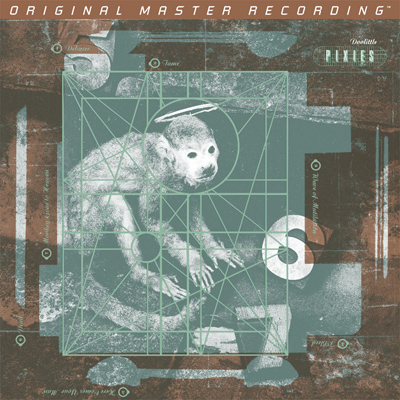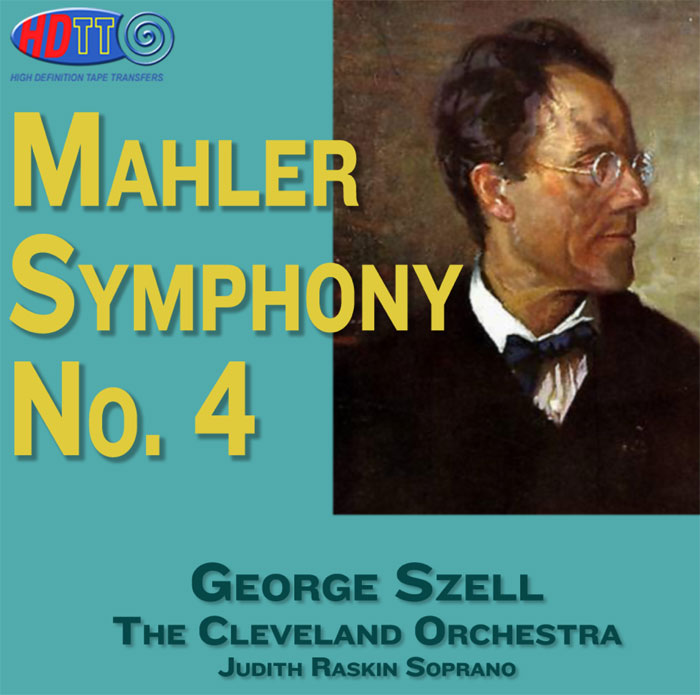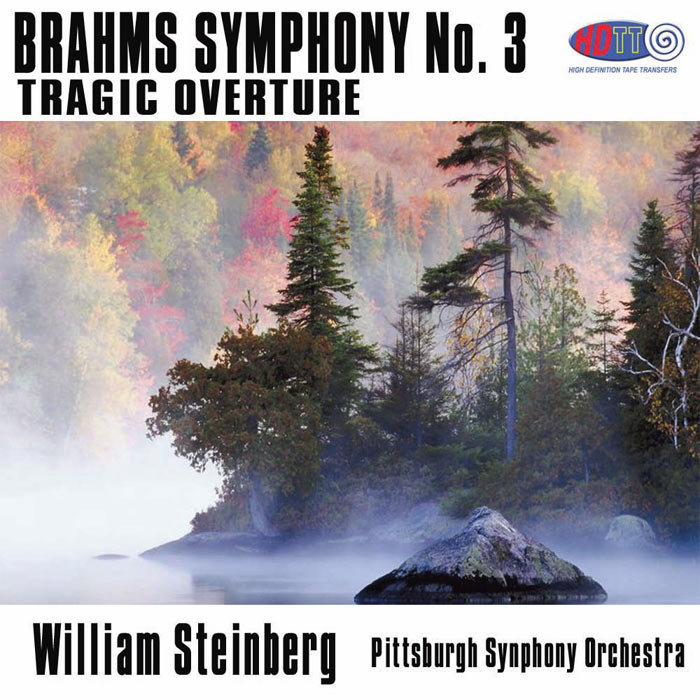Logowanie
Dlaczego wszystkjie inne nie brzmią tak jak te?
Chai Lang, Fan Tao, Broadcasting Chinese Orchestra
Illusive Butterfly
Butterly - motyl - to sekret i tajemnica muzyki chińskiej.
SpeakersCorner - OSTATNIE!!!!
RAVEL, DEBUSSY, Paul Paray, Detroit Symphony Orchestra
Prelude a l'Apres-midi d'un faune / Petite Suite / Valses nobles et sentimentales / Le Tombeau de Couperin
Samozapłon gwarantowany - Himalaje sztuki audiofilskiej
PROKOFIEV, Stanislaw Skrowaczewski, Minneapolis Symphony Orchestra
Romeo and Juliet
Stanisław Skrowaczewski,
✟ 22-02-2017
BARTOK, Antal Dorati, Philharmonia Hungarica
Dance Suite / Two Portraits / Two Excerpts From 'Mikrokosmos'
Samozapłon gwarantowany - Himalaje sztuki audiofilskiej
ENESCU, LISZT, Antal Dorati, The London Symphony Orchestra
Two Roumanian Rhapsodies / Hungarian Rhapsody Nos. 2 & 3
Samozapłon gwarantowany - Himalaje sztuki audiofilskiej
Winylowy niezbędnik
ClearAudio
Cartridge Alignment Gauge - uniwersalny przyrząd do ustawiania geometrii wkładki i ramienia
Jedyny na rynku, tak wszechstronny i właściwy do każdego typu gramofonu!
ClearAudio
Harmo-nicer - nie tylko mata gramofonowa
Najlepsze rozwiązania leżą tuż obok
IDEALNA MATA ANTYPOŚLIZGOWA I ANTYWIBRACYJNA.
Wzorcowe
Carmen Gomes
Celebrating the art and spirit of music - vol. 5 - Reference Songs
- CHCECIE TO WIERZCIE, CHCECIE - NIE WIERZCIE, ALE TO NIE JEST ZŁUDZENIE!!!
Petra Rosa, Eddie C.
Celebrating the art and spirit of music - vol. 3 - Pure
warm sophisticated voice...
SAMPLER - STS DIGITAL, Gregor Hamilton
Celebrating the art and spirit of music - vol. 2 - Love songs from Gregor Hamilton
...jak opanować serca bicie?...
SAMPLER - STS DIGITAL
Celebrating the art and spirit of music - vol. 1 - Leonardo Amuedo
Największy romans sopranu z głębokim basem... wiosennym
Lils Mackintosh
Celebrating the art and spirit of music - vol. 4 - A Tribute to Billie Holiday
Uczennica godna swej Mistrzyni
MAHLER, Royal Concertgebouw Orchestra, Bernard Haitink
Symphony No. 7
- 1. Langsam Allegro risoluto, ma non troppo ( (E minor, beginning B minor) 21:56
- 2. Nachtmusik (I): Allegro moderato. Molto moderato (Andante) (C minor) 14:44
- 3. Scherzo: Schattenhaft. Fließend aber nicht zu schnell (D minor) - The German marking means Shadowy. Flowing but not fast 10:36
- 4. Nachtmusik (II): Andante amoroso (F major) 12:58
- 5. Rondo-Finale (C major).17:56
- Royal Concertgebouw Orchestra - orchestra
- Bernard Haitink - conductor
- MAHLER
Gustav Mahler B. July 7, 1860 in Kalischt Bohemia D. May 18, 1911 in Vienna, Austria The Seventh Symphony continues certain patterns of musical discourse established in Gustav Mahlers previous two works in this form. Its broad structural outlines resemble those of the Fifth Symphony. Like that work, the present composition is in ve movements which include a complex opening, a scherzo as its centerpiece, a tender slow movement, and a Rondo-Finale marked by contrapuntal combining of themes and the reappearance of material heard earlier in the composition. The Seventh Symphony is linked to its immediate predecessor, Mahlers Symphony No. 6, mainly by way of the striking similarity of several of its themes. Mahler prefaces his rst movement with an introduction in slow tempo, a practice that can be traced back to the Classical-period symphonists. The composition opens with an insistent rhythmic pulse in the strings which sets the stage for a dramatic theme announced by a tenor horn (one of several unusual instruments Mahler employs in this work), a strange fanfare that will haunt the entire movement. Touching on a slender march subject and nally a more portentous idea introduced by the trombones, the music gathers momentum and accelerates into the main Allegro portion of the movement. Here the principal theme, announced by the French horns, derives from the last gure of the introduction. (It also bears a strong resemblance to its counterpart in Mahlers Sixth Symphony.) Announced over a galloping accompaniment, it conveys a sense of great urgency. At length, Mahler counters this idea with a contrasting second subject, one as sweetly lyrical as the rst was animated. We hear also recollections of the tenor horn theme and the march tune from the introduction, both transformed in extraordinary and unexpected ways. Despite a substantial stretch of serene music midway through, the movement as a whole gives the impression of an intense and often turbulent struggle. This opening chapter of the symphony gives way to the rst Night Music (Nachtmusik). Once again, a horn call provides the principal idea. The fanfare of the opening measures brings answering phrases from various woodwinds, a series of nocturnal cries that lead, as though in a dream, to a long march. As in the opening movement, its theme derives from the introduction in this case, from the horn-call gure. Bird songs from the utes, the sounds of cowbells, and a continual shifting between major and minor harmonies color this portion of the symphony. If the second movement has seemed dream-like, the ensuing Scherzo is even more so. On the whole, it is a tful rather than tranquil reverie, one that seems often on the verge of nightmare. Mahler headed the movement with a character indication, Shadowy (Schattenhaft), which seems entirely appropriate to what we hear. Alma Mahler, the composers wife, referred to the fourth movement as a serenade, and both its tempo marking (Andante amoroso) and the music itself suggest a romantic interlude. Moreover, her memoirs link this movement to images from the poetry of Joseph von Eichendor murmuring spring and German Romanticism, as Frau Mahler put it. The scoring, which features guitar, mandolin and solo violin, is delicate and original. Launched with a burst of timpani and brass, the nale nds Mahler at his most exuberant. Episodes follow one another in quick succession, and even the contrapuntal passages give an unusual impression of sheer abandon rather than calculation. Mahler alludes to Wagners Die Meistersinger von Nürnberg in this symphonic nale as he has in others before (he had quoted from this opera also in the closing movement of his Fifth Symphony). At length, the composer recalls the principal theme from the opening movement and combines this with thematic material of the nale as the music approaches a great nal climax. Bernard Johan Herman Haitink (born March 4, 1929) Bernard Haitink was born in Amsterdam and his interest in music was rst stimulated when, as a child, he would go to hear concerts given by the Amsterdam Concertgebouw Orchestra under Willem Mengelberg. At the age of nine he started to have violin lessons, which he continued at the Amsterdam Conservatory, where he also studied conducting with Felix Hupka. He joined the Netherlands Radio Symphony Orchestra as a violinist but in 1954 and 1955 attended the annual courses for conductors organised by the Netherlands Radio Union, at which he studied with Ferdinand Leitner. This experience led directly to his appointment in 1955 as second conductor with the Union, sharing responsibility for four radio orchestras. Mr Haitink rst attracted attention when in 1956 he substituted for Carlo Maria Giulini in a performance of Cherubinis Requiem with the Concertgebouw Orchestra, as a result of which he was invited to be a guest conductor at some of the orchestras regular concerts. Having become principal conductor of the Netherlands Radio Philharmonic Orchestra in the following year, he made his American debut in 1958, with the Los Angeles Philharmonic Orchestra, and rst appeared in Britain in 1959, on a tour with the Concertgebouw Orchestra, with whom he made his first recording during the same year. Following the unexpected death of the Concertgebouw Orchestras chief conductor Eduard van Beinum, also in 1959, Haitink and Eugen Jochum were appointed joint chief conductors of the orchestra in 1961. This arrangement lasted until 1963, when Haitink assumed full responsibility for the orchestra, also becoming a guest conductor with the London Philharmonic Orchestra. He was appointed chief conductor of the LPO in 1967 and, between 1970 and 1979 he was also it's artistic director. Haitink made his debut at the Glyndebourne Festival Opera in 1972, conducting Mozart's Die Entführung aus dem Serail, and returned to lead Die Zauber öte in 1973 and Stravinskys The Rakes Progress in 1975. Two years later he succeeded Sir John Pritchard as the Festivals chief conductor, a post that he retained until 1988. While at Glyndebourne Haitink conducted a repertoire that included Beethovens Fidelio, Richard Strausss Arabella, Proko evs The Love for Three Oranges and Brittens A Midsummer Nights Dream, in addition to the principal Mozart operas. Having rst appeared with the Royal Opera Company at Covent Garden in 1977 conducting Don Giovanni, and at the Metropolitan Opera in 1982 with Fidelio, Haitink maintained his association with Covent Garden, conducting performances of Verdi's Un ballo in maschera, Janáceks Jenufa and Wagner's Lohengrin and Parsifal, and was appointed the companys chief conductor in 1987. Although he su ered terribly during the traumas of the closure and rebuilding of the Royal Opera House between 1997 and 1999, arguably it was his principled stand that prevented the Covent Garden orchestra and chorus from being disbanded during this period. While in command at the Royal Opera, both before and after the closure, Haitink conducted memorable accounts of the major elements of the traditional operatic repertoire, such as Wagners Der Ring des Nibelungen, Die Meistersinger von Nürnberg and Tristan und Isolde, Verdis Don Carlo and Falsta , Mozarts Le nozze di Figaro, Borodins Prince Igor, Tchaikovsky's The Queen of Spades and Brittens Peter Grimes. He also took the orchestra out of the opera house and led it in several notable orchestral concerts. In addition to his operatic work in London, Haitink maintained an active concert schedule. As well as regularly appearing as a guest conductor with major orchestras such as the Berlin Philharmonic of which he is an honorary member, London Symphony, and Vienna Philharmonic, between 1994 and 1999 he was chief conductor of the European Union Youth Orchestra, and in 1995 was appointed principal guest conductor of the Boston Symphony Orchestra where he is currently conductor emeritus. Haitink relinquished his post at Covent Garden in 2002, becoming chief conductor of the Dresden Staatskapelle and also honorary conductor of the Concertgebouw Orchestra the rst time that such a title had been awarded in the history of the orchestra. In 2006 he took up the newly-created post of principal conductor with the Chicago Symphony Orchestra. Among the many honours Haitink has received during his long career are an honorary knighthood in 1977, the Erasmus Prize in Holland in 1991, and the Order of the House of Orange-Nassau, conferred upon him by the Queen of The Netherlands for his achievements in the arts; in 2002 he was made a Companion of Honour by Her Majesty the Queen of England.




























